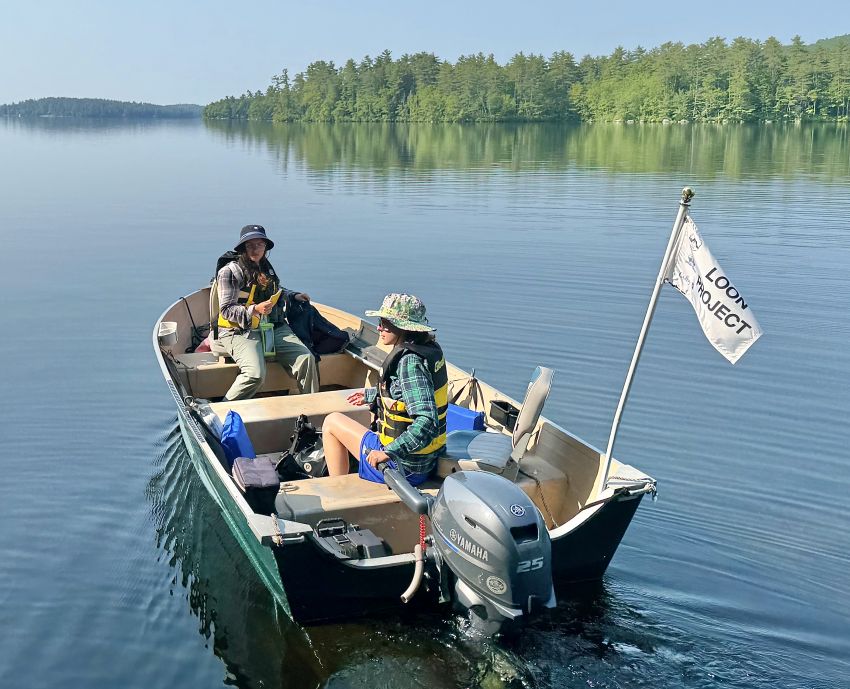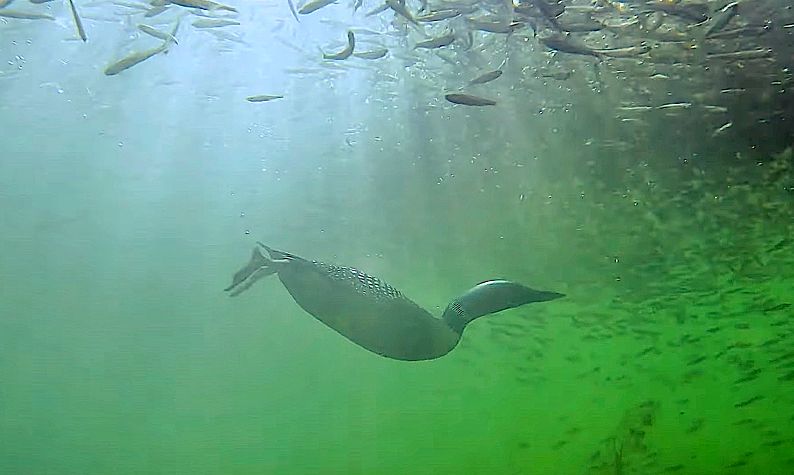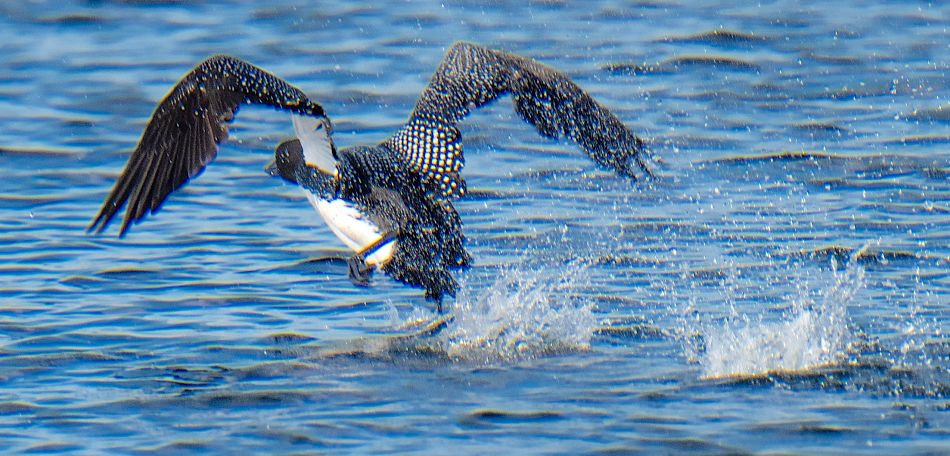
Lots of Love for Loons!

Upon first setting my sights on the white-dappled and red-eyed Common Loons of our very own Great Pond, I instantly fell in love.
During my training with Lee Attix and Dick Greenan on both Great and Long Pond, I learned about a hundred different little things a day. I observed loon behavior from aggression to courtship, their feeding habits, and even the way these heavy-bodied birds take flight. No sight is quite as fascinating as a loon flapping its wings while using its big-strong legs and feet to schlipschlap across the water’s surface as it builds up enough momentum for takeoff!
As a long-time duck enthusiast, I was surprised to learn that loons are genetically more closely related to penguins than other waterfowl! This makes sense if you have ever seen these birds move underwater. With speed and precision, they dive and quickly catch their aquatic prey. No wonder these birds are the apex predators of the lakes!

Coming from a warmer climate in Georgia, I had not encountered loons until I came to Maine to study at Colby College. But my love for working with birds did not start with loons. Last summer, I worked and lived as a field intern on Outer Green Island off the coast of Portland and spent my days monitoring a breeding colony of Common Terns. These quirky and loveable seabirds of the family Laridae, which includes gulls, are noisy little fellows. Terns enjoy divebombing interns such as myself during chick check-ins. My first summer of fieldwork in Maine made me fall in love with the state’s wildlife. Compelled to continue working in conservation, I applied to the Loon Project.
Working with the BLA, my summer has been ever more exciting with the elusive Common Loon. While they can be just as, if not more, intense than the terns, puttering around on the skiff and observing the loons has been a pleasantly quiet respite. On a clear and windless day, you can see loons as they mesmerizingly swim by the boat just under the surface of the water. Watching the chicks emerge and be fed minnows by their parents has been enchanting.

Monitoring the loons is always an adventure. It requires attention to detail and the ability to sustain long hours in the baking sun. With my co-intern and friend Makena Logan at my side, we get the job done. I am grateful for all the support I receive not only from Dick of the Belgrade Lakes Association, Lee of the Loon Conservation Associates, and Cathy Bevier of Colby College, but also from the community on both lakes. The help of volunteers in updating us and loaning us their kayaks makes this project possible. Loons are a valuable indicator of water quality and bring joy to those lucky enough to cross paths with one. As I continue my work on the lakes, I hope to gather valuable information on our loon populations to help us keep them around for decades to come!
Thank you Ari (and Makena) for all of your continued hard work and dedication to our Loon population! If you have questions regarding our Belgrade loons, please email info@blamaine.org, and we will try to answer your question either in this column or via email. Have a great summer enjoying the “Call of the Loon”! — Dick Greenan
Dick Greenan is chairman of the Belgrade Lakes Association’s Loon Preservation Project.
Download Full Newspaper: High Res | Low Res (Details…)
<— Previous Article • Summaries • Next Article —>
©2025 by Summertime in the Belgrades. All rights reserved.